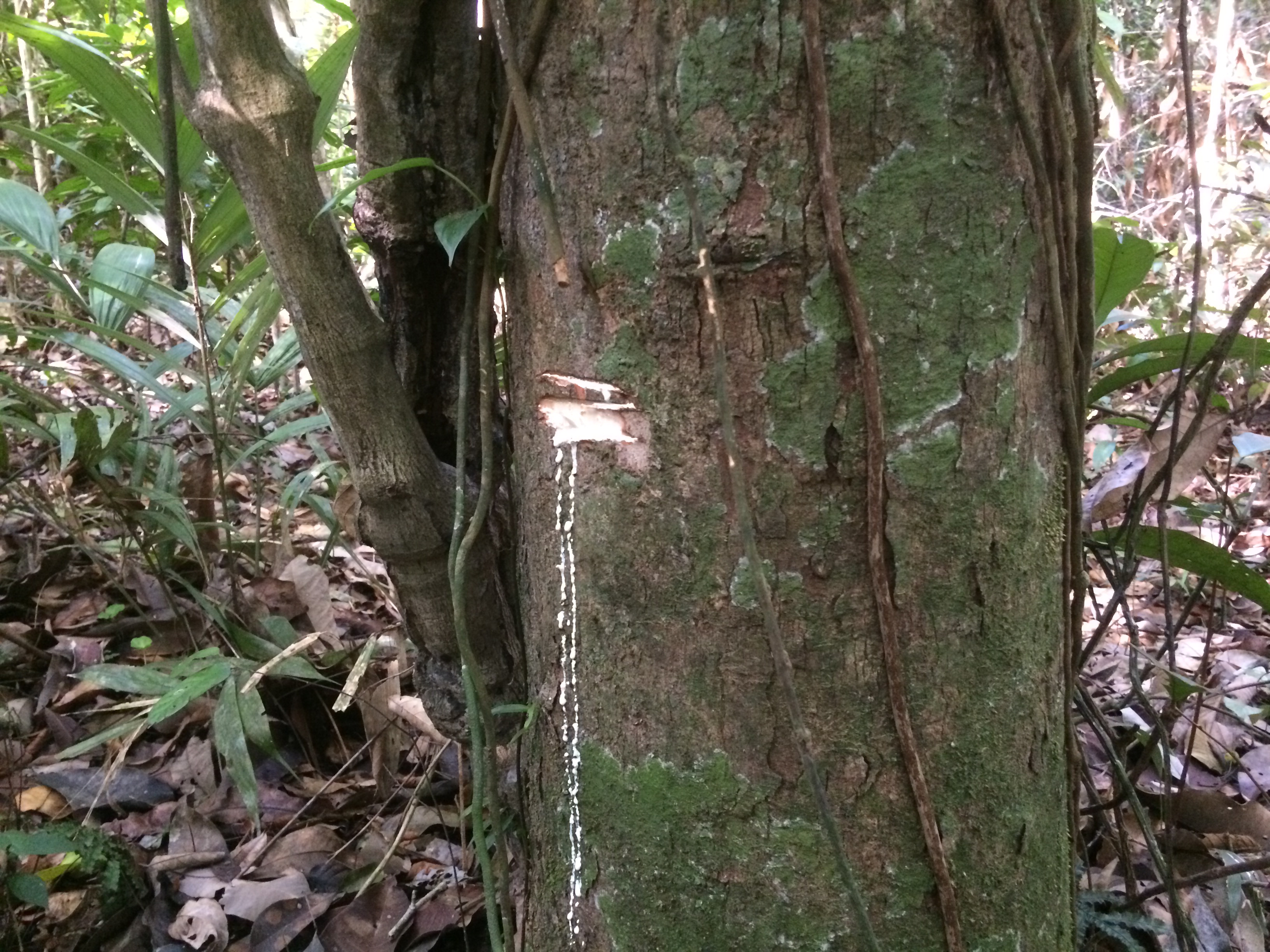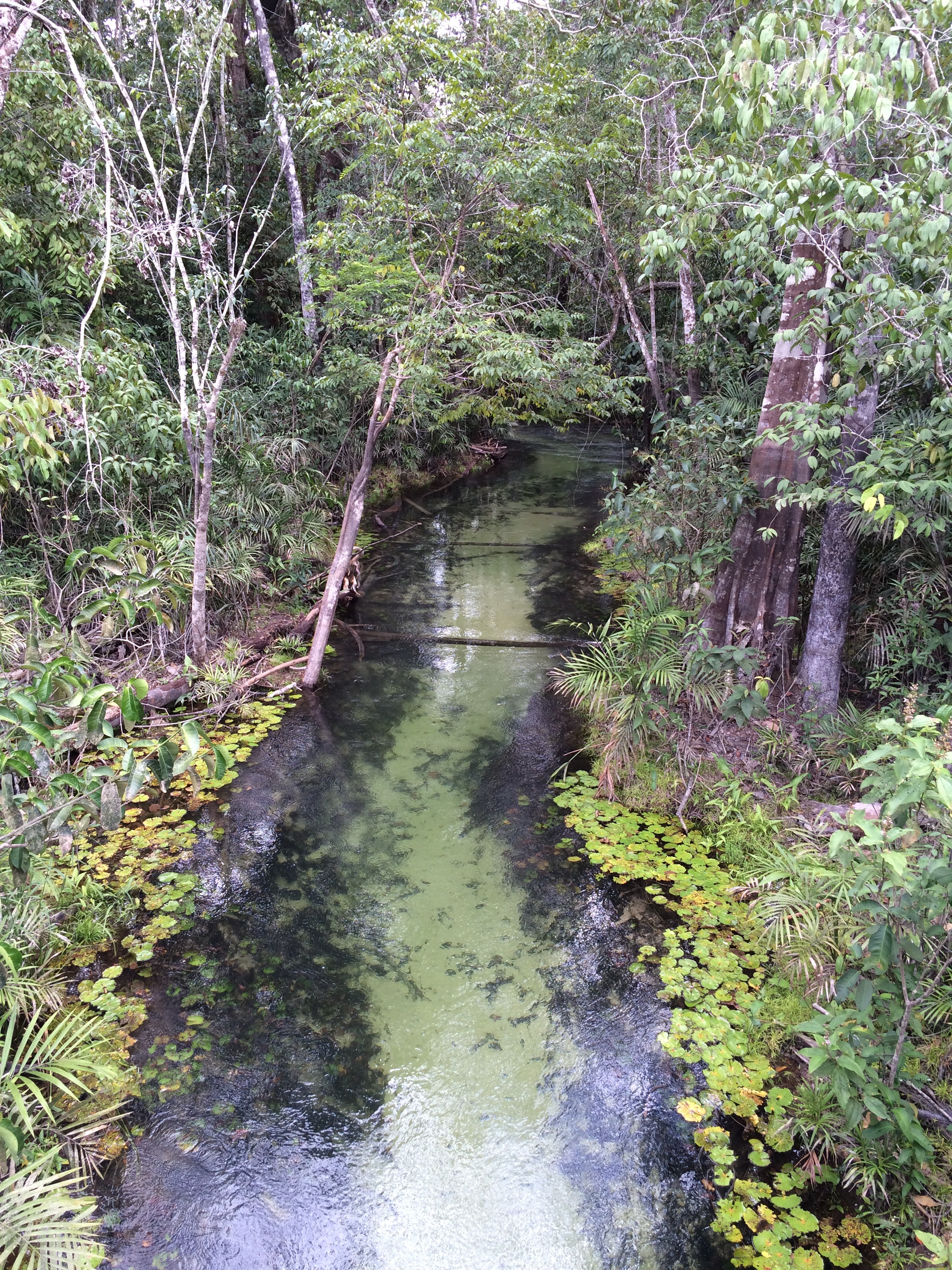This PEER project involving researchers from three Brazilian institutions was completed as of May 31, 2018. There were 69 participants, more than half of them female, and as of January 2019 they had produced 19 publications with PEER support. So far, the PI and co-PIs have obtained more than $400,000 in additional support from Brazilian and U.S. sources to continue and expand their research efforts. Beyond their collaboration with U.S. partner Barry Sinervo of the University of Utah, PEER funds helped them build linkages with several other counterparts in the United States, the United Kingdom, and Sweden. A vast amount of data has been collected and is publicly available for use by other researchers. The data collected by the UNEMAT team is deposited in the database of the Rainfor Project hosted by the University of Leeds (UK):
https://www.forestplots.net/en. The DNA data collected by the researchers at INPA are available through
GenBank, and phylogenetic trees are posted in
Treebase. For geographic, ecological, and morphological data the INPA group uses repositories such as
Dryad Digital Repository and the
Biodiversity Research Program-PPBio Amazônia Occidental. Supplementary material for the published articles is found on co-PI Dr. Fernanda Werneck's
laboratory page and
ResearchGate page, among other locations. Following are summaries of project activities for each of the three Brazilian institutions:
UNIVERSIDADE DE BRASÍLIA – UNB
In this collaborative project, the UNB team characterized the plant assemblages and the herpetofauna (amphibians and reptiles) of the Amazon-Cerrado transition in Brazil, the “Arc of Deforestation,” and assessed their vulnerability to climate change and habitat loss. The researchers conducted fieldwork at selected sites to obtain biodiversity data, including species composition and abundances, ecological traits, tissue samples and ecophysiological data. They also obtained ecophysiological and molecular data for phylogeographic and phylogenetic analyses, developing critical knowledge for scientists, policy makers, and the public to make informed decisions about how human activities will influence the biota and biosphere processes. They produced a wealth of data and results that will positively affect biodiversity conservation in the “Arc of Deforestation” of the Brazilian Amazon and on indigenous lands located in the region. Their results, based on demographic, community, genetic, and ecophysiological data and consolidated in several academic publications, highlight the uniqueness of the region, the major threats to its unique biodiversity, and the susceptibility of its biota to the combined threats of local and global anthropogenic changes in the environment. The PI reports that his results are being used by local and federal agencies to inform environmental governance systems for improved biodiversity conservation in the region. He and his team have also promoted the training of a large number of students and scientists on data acquisition and analysis, which should have a lasting impact on biodiversity conservation and natural resource management in the region.
UNIVERSIDADE DO ESTADO DO MATO GROSSO – UNEMAT
Headed by co-PI Ben Hur Marimon Junior, the team at UNEMAT selected, inventoried, and investigated field sites to gather species composition, biomass, and ecophysiological data. The vegetation types between Amazonian Dark Earth forests (ADE) and non-ADE forests were totally defined and the results are being published in a special issue of Frontiers in Ecology and Evolution (Oliveira et al., in press as of January 2019), as well as other publications. Experiments in greenhouses and field work combining a dataset on the hydraulic performance of plants with an anatomic dataset of the main species found in ADE and non-ADE sites corroborate the team’s original hypothesis regarding the high fragility of ADE ecosystems to the environmental changes caused by both land use and climate changes. They have discovered that global climate changes can be reinforced by local changes due to the deforestation of surrounding ADE areas. Their tests investigating the growth performance under treatment of different doses of pyrogenic carbon (PyC) of the main tree species of ADE and non-ADE sites revealed the capability of PyC in conditioning soil and increasing the survival performance of tree species. However, as yet they have no evidence that PyC can prevent plant mortality due to environmental stressors such as temperature and drought, since their results showed higher vulnerability of ADE tree species compared to non-ADE species. Forest inventories combined with ecophysiological data have provided clear evidence of the threat from both climate change (tree blow down, drought, and heat) and land use (selective logging and deforestation). These results highlight the risks of local extinction due to climate and land use factors. These researchers’ findings should be useful in guiding the formulation of public policies for sustainable land use in the Arc of Deforestation of Southern Amazonia to prevent local extinctions.
INSTITUTO NACIONAL DE PESQUISAS DA AMAZÔNIA – INPA
This portion of the project had wide scientific impacts, both in the research group led by co-PI Dr. Fernanda Werneck at INPA and in the fields of scientific knowledge in which the project fits (i.e., diversity, effects of climate change, and conservation of Neotropical fauna). Thanks to the resources and opportunities provided by PEER, Dr. Werneck reports that she was able to recruit personnel in Northern Brazil for training at the undergraduate and graduate levels, including several from minority groups. She and her team carried out field expeditions to sample biological, ecological, and evolutionary data in geographical areas considered as gaps in the knowledge of biodiversity. They collected and analyzed molecular data using on modern DNA sequencing techniques, producing dozens of outputs, including articles published in high-impact journals, manuscripts in preparation for publication, dissertations, theses, and reports. In addition, they have disseminated the scientific knowledge generated to the scientific community and governmental and non-governmental agencies active in the area of biodiversity conservation. This outreach was conducted through publications, training courses, public presentations of results, submissions to biodiversity databases, participation in technical advisory meetings on biodiversity conservation, webpage maintenance, and participation in dozens of interviews and news reports. According to Dr. Werneck, the contributions and impacts of this project to the generation and dissemination of scientific knowledge and training of qualified human resources in studies of evolution and conservation of biodiversity were substantial and fostered the consolidation of INPA and her research group as leading reference points for studies on the evolution and conservation of biodiversity.
Following are some links to news coverage in 2018 regarding one of the discoveries made by researchers on this PEER project:
http://time.com/5218270/amazonian-civilization-discovered-mato-grosso/https://news.nationalgeographic.com/2018/03/amazon-jungle-ancient-population-satellite-computer-model/ http://www.bbc.com/portuguese/brasil-43584353 https://www.theguardian.com/science/2018/mar/27/lost-amazon-villages-uncovered-by-archaeologists https://g1.globo.com/ciencia-e-saude/noticia/cientistas-descobrem-81-aldeias-perdidas-que-podem-recontar-a-historia-da-amazonia.ghtml Back to PEER Science Cycle 3 Grants





